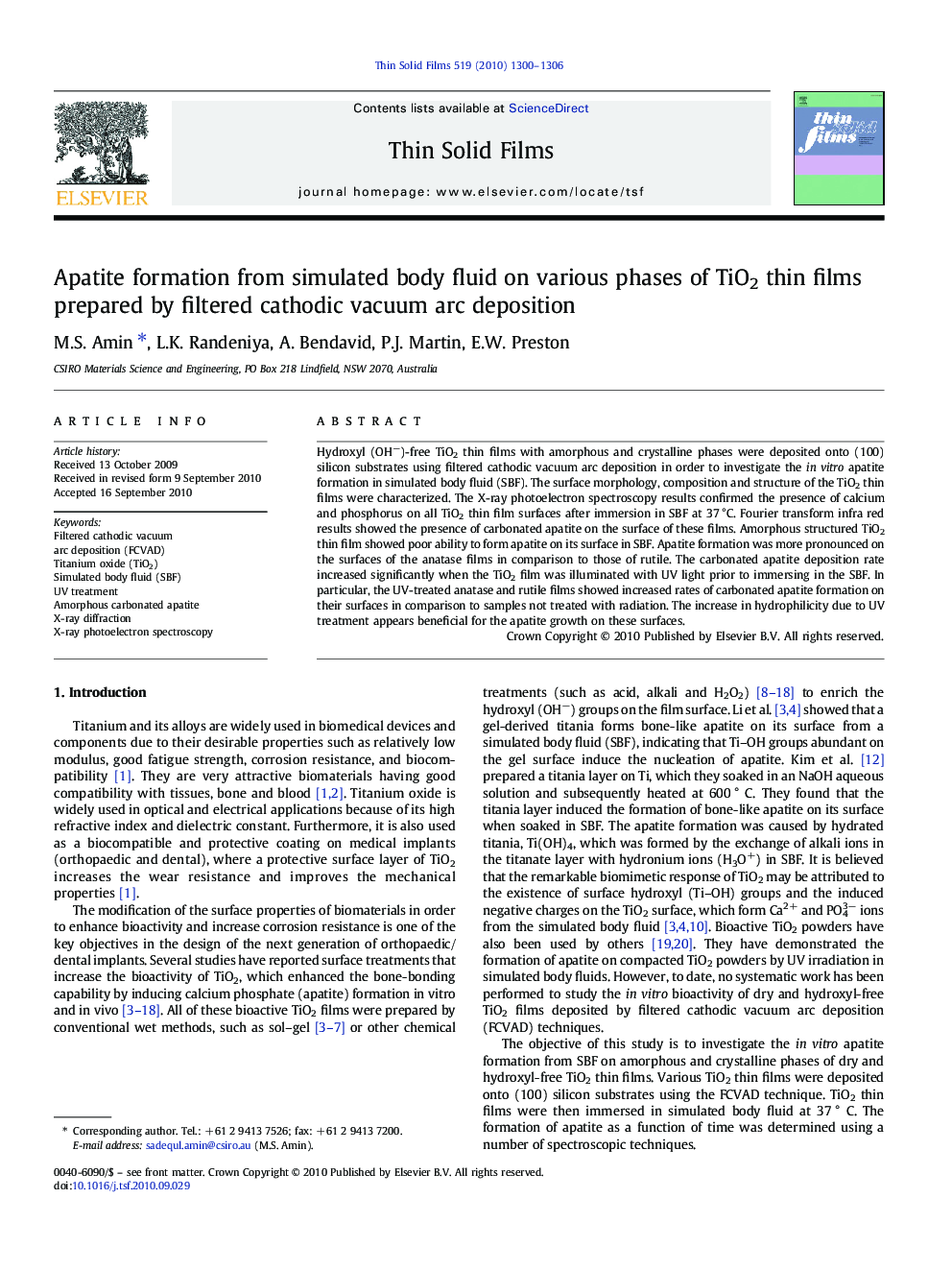| Article ID | Journal | Published Year | Pages | File Type |
|---|---|---|---|---|
| 1670006 | Thin Solid Films | 2010 | 7 Pages |
Hydroxyl (OH−)-free TiO2 thin films with amorphous and crystalline phases were deposited onto (100) silicon substrates using filtered cathodic vacuum arc deposition in order to investigate the in vitro apatite formation in simulated body fluid (SBF). The surface morphology, composition and structure of the TiO2 thin films were characterized. The X-ray photoelectron spectroscopy results confirmed the presence of calcium and phosphorus on all TiO2 thin film surfaces after immersion in SBF at 37 °C. Fourier transform infra red results showed the presence of carbonated apatite on the surface of these films. Amorphous structured TiO2 thin film showed poor ability to form apatite on its surface in SBF. Apatite formation was more pronounced on the surfaces of the anatase films in comparison to those of rutile. The carbonated apatite deposition rate increased significantly when the TiO2 film was illuminated with UV light prior to immersing in the SBF. In particular, the UV-treated anatase and rutile films showed increased rates of carbonated apatite formation on their surfaces in comparison to samples not treated with radiation. The increase in hydrophilicity due to UV treatment appears beneficial for the apatite growth on these surfaces.
